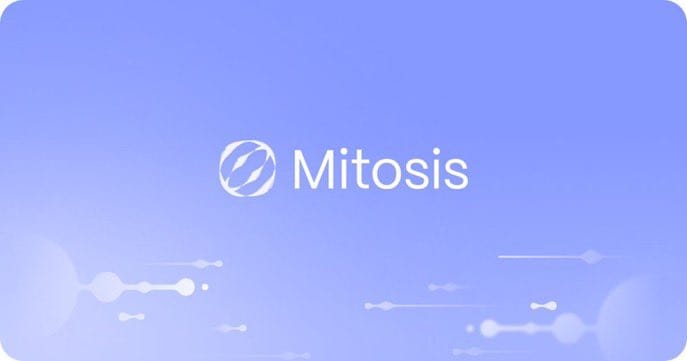Caldera Rollups: A Deep Dive into the Future of Blockchain Scalability

Blockchain technology has revolutionized the way we think about trust, decentralization, and transparency. However, as the popularity of blockchain applications has soared, a glaring issue has become impossible to ignore — scalability. Many of the major blockchains today face significant limitations when it comes to processing a large number of transactions quickly and cheaply. This bottleneck hinders mainstream adoption and usability.
To solve this problem, developers and researchers have turned to Layer 2 solutions, and one of the most promising of these is Caldera Rollups. This article will explore in detail what Caldera Rollups are, how they work on a technical level, and why they have the potential to transform the blockchain landscape. We will also discuss the challenges these technologies face and what the future might hold.
What Is Scalability and Why Does It Matter?
Before diving into Caldera Rollups, it’s important to understand the concept of scalability in blockchain.
Scalability refers to a blockchain’s ability to handle a growing amount of work — specifically, the number of transactions it can process per second. Popular blockchains like Bitcoin and Ethereum have relatively low throughput compared to traditional payment systems like Visa or Mastercard. For example, Ethereum can handle around 15 to 30 transactions per second, which is far less than centralized systems that process thousands or tens of thousands per second.
Low scalability leads to network congestion, slower transaction times, and higher fees, which degrade user experience. As blockchain applications expand beyond simple transfers to complex decentralized finance (DeFi), gaming, and NFT marketplaces, scalability becomes a critical roadblock.
Enter Layer 2: The Concept Behind Rollups
One way to increase scalability is to move transactions off the main blockchain, also called Layer 1, to a secondary framework known as Layer 2. Layer 2 protocols handle transactions off-chain and only submit summarized data to the main chain. This dramatically reduces the load on the main blockchain while preserving security guarantees.
Rollups are a category of Layer 2 solutions that bundle or “roll up” multiple transactions into a single batch. These batches are then posted on-chain along with cryptographic proofs validating their correctness.
What Are Caldera Rollups?
Caldera Rollups are a modern, modular approach to Layer 2 rollup technology designed to make it easier for developers to deploy their own scalable blockchains. They aggregate thousands of transactions off-chain, compressing them and submitting proofs on-chain in a way that reduces costs and increases speed without compromising security.
Caldera emphasizes flexibility. It offers tools for developers to customize rollups tailored to their applications, enabling everything from simple token transfers to complex smart contract executions on Layer 2.
How Do Caldera Rollups Work? A Technical Breakdown
- Transaction Aggregation
At its core, Caldera Rollups collect many transactions from users and batch them together off-chain. This batching process involves cryptographic data structures like Merkle Trees, which enable efficient verification of individual transactions within the batch.
- Zero-Knowledge Proofs
Caldera often uses Zero-Knowledge Succinct Non-Interactive Arguments of Knowledge (zk-SNARKs) or similar cryptographic proofs. These proofs enable the rollup to demonstrate the validity of the entire batch to the main chain without revealing all transaction details. This both enhances privacy and speeds up verification.
- On-Chain Commitment
Once a batch is ready, Caldera submits a single on-chain transaction that contains:
- The root hash of the batch (Merkle root).
- The zero-knowledge proof certifying the batch’s correctness.
The main blockchain then only needs to verify this proof to finalize all transactions in the batch simultaneously.
- Security Inheritance
By posting proofs on Layer 1, Caldera inherits the security properties of the underlying blockchain. This means that even though transactions happen off-chain, they are secured by the main chain’s consensus mechanism.
- Modular Design
Caldera’s modular framework allows developers to select different virtual machines (VMs), state transition functions, and communication protocols. This flexibility lets projects customize rollups for specific use cases — for instance, privacy-focused rollups or high-speed gaming rollups.
Why Are Caldera Rollups a Game Changer?
1. Significant Scalability Boost
By moving most transaction processing off-chain, Caldera can increase transaction throughput dramatically. Instead of processing 15-30 transactions per second like Ethereum’s mainnet, Caldera Rollups can handle thousands per second.
2. Lower Costs
Since many transactions are bundled together, the per-transaction fee is drastically reduced. This makes blockchain interactions affordable for micro-transactions, gaming, and other high-frequency use cases.
3. Better User Experience
Users benefit from faster transaction finality — transactions can confirm in seconds rather than minutes or hours. This brings blockchain closer to the responsiveness of traditional apps.
4. Developer Friendly
Caldera makes it easier for developers to launch their own rollups with tools and frameworks that reduce complexity. This democratizes blockchain infrastructure, fostering innovation.
5. Interoperability and Modularity
Caldera’s approach supports interoperability with other chains and Layer 2s, creating a more connected ecosystem of blockchains.
Potential Impacts on the Blockchain Ecosystem
Mass Adoption
Faster, cheaper, and more user-friendly blockchain transactions remove a major barrier to adoption. Whether it’s payments, decentralized exchanges, or NFTs, Caldera Rollups can help onboard millions of users.
New Use Cases
Applications requiring high throughput and low latency, like blockchain gaming and real-time marketplaces, become viable.
Decentralized Finance (DeFi)
DeFi platforms can scale without compromising security, enabling more complex financial products accessible to wider audiences.
Business Adoption
Enterprises hesitant to use blockchain due to cost and speed will find solutions like Caldera Rollups attractive.
Challenges and Considerations
While promising, Caldera Rollups are not without challenges:
- Bridge Security: Moving assets between Layer 1 and Layer 2 introduces security risks. Robust bridge design is critical.
- Decentralization: Some rollups may risk centralization in operator control, impacting trustlessness.
- Complexity: Running and maintaining rollups demands advanced technical knowledge.
- Ecosystem Maturity: Integration with wallets, exchanges, and other services is still evolving.
The Road Ahead: What to Expect
The blockchain community is actively innovating on rollups, bridges, and Layer 2 infrastructure. Caldera Rollups are part of a broader movement toward modular blockchains, where execution, consensus, and data availability are decoupled for optimal performance.
As ecosystems mature, expect more interoperability protocols, enhanced privacy layers, and user-friendly tooling, making blockchain technology more accessible to everyone.
Final Thoughts
Caldera Rollups represent a major step forward in solving blockchain scalability. By leveraging advanced cryptography and modular design, they offer fast, cheap, and secure transactions that can power the next generation of decentralized applications.
Whether you are a developer, investor, or user, understanding Caldera Rollups gives insight into where blockchain technology is headed — toward a scalable, interoperable, and inclusive digital future.


Comments ()